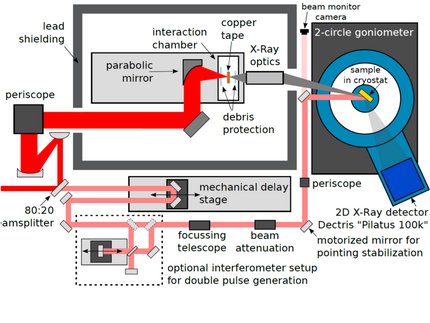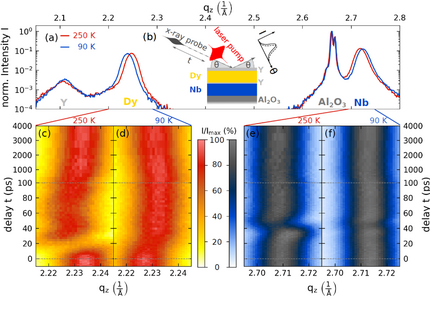Time-resolved x-ray diffraction using the PXS
The laser-driven plasma x-ray source (PXS) produces Cu K-alpha radiation (hard x-rays) with a pulse duration of ~200 fs by focussing a femtosecond laser pulse onto a moving copper tape. The generated x-ray pulses pulses are focussed onto the sample of interest mounted in a cryogenic 2-circle goniometer. The x-ray photons diffracted off the sample are detected with a Pilatus 100k pixel detector (DECTRIS) to record time-resolved reciprocal space maps (RSM) or reciprocal space slices (RSS).
The ultrafast strain dynamics of the investigated heterostructures are then derived from time-dependent shifts of various Bragg peaks in reciprocal space, that are material specific probes of the ultrafast lattice changes in each layer. Unlike optical probes, x-rays are capable of detecting layers burried below thick metallic films and even separating the response of two adjacent few-nanometer thick metal layers. The example shown in the right figure displays the rich lattice dynamics inside a heterostructure containing the magnetic rare-earth element Dysprosium which expands upon ultrafast laser-heating at room temperature, but contracts upon excitation at low temperatures due to additional stress components in the magnetic phases.
Further details:
Reppert et al., Struct. Dyn. 3, 054302 (2016).
Reppert et al., Struct. Dyn. 7, 024303 (2020).


